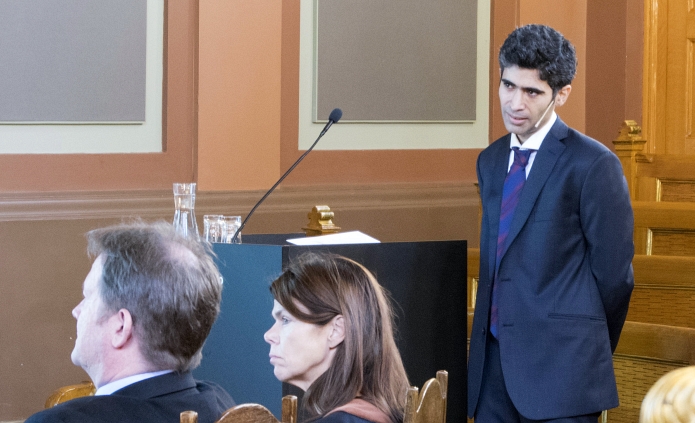
Thesis summary
The term bone marrow lesions (BMLs) denotes changes in bone tissue that are often invisible in x-rays but can be detected using MRI or ultrasound. BMLs are frequently elicited due to injury to bone and considered a central component of many diseases affecting the musculoskeletal system. The aim of the project was to characterise changes in bone histology and biochemistry in bone with BMLs using dynamic tetracycline based histo-morphometry, multiplex immunoassays and proteomics. Patients recruited in the three studies included in this dissertation had osteoarthritis (OA), and were referred for arthroplasty due to pain and reduced function in the hip and the joint in the thumb base. Bone biopsies were taken and studied using different quantitative techniques to identify tissue changes underlying BMLs.
The main findings were that the presence of BMLs represents several changes in the bone metabolism of osteoarthritic bone. In paper I, samples with BMLs demonstrated a reduction of adipose tissue in the marrow and enhanced formation of woven bone. Immunohisto-chemistry revealed increased vascularity indicated by angiogenesis markers in the BMLs-group compared to age-matched controls. Loss of cartilage was evaluated using a standard classification system, which demonstrated more severe cartilage loss in samples affected by BMLs.
When comparing bone from the hips to bone from the thumb base with OA in paper II, similar histomorphometric results were found with some minor differences. The major similarity was enhanced bone turnover and vascularity in BMLs of both thumb base and hip OA compared to hip bone without BMLs. Because bone turnover was enhanced 2-fold in average in the hip specimens with BMLs compared to the thumb base, it was concluded that weight-bearing might augment bone turnover.
The major findings in the third paper were altered levels of proteins and cytokines in bone with BMLs, pointing to the potential influence of such changes in the pathogenesis of OA. By multiplex immunoassays, it was observed that tissue levels of vascular endothelial growth factors and interleukin-6 were elevated, whereas osteoprotegerin was reduced in hips with BMLs compared to those without. The proteomic analysis demonstrated enhanced levels of several proteins, among others hemoglobin and serum albumin. Levels of several bone proteins, such as aggrecan core protein and hyaluronan and proteoglycan link protein 1, were lower in BMLs. The findings were consistent with increased bone turnover and compromised bone matrix properties. The pronounced increase in angiogenesis markers, hemoglobin and serum albumin supported the presence of increased vascularity in subchondral bone affected by BMLs in OA demonstrated by histological examination. These differences at the tissue level were in agreement with pain being a clinical feature frequently associated with BMLs in OA.
Evaluation committee
- Professor Philip Conaghan, University of Leeds, UK
- Dr Berit Helen Jensen Grandaunet, St Olav's University Hospital, Trondheim, Norway
- Associate professor Dipak Sapkota, University of Oslo
Supervisors
- Professor Janne E Reseland
- Professor Erik Fink Eriksen